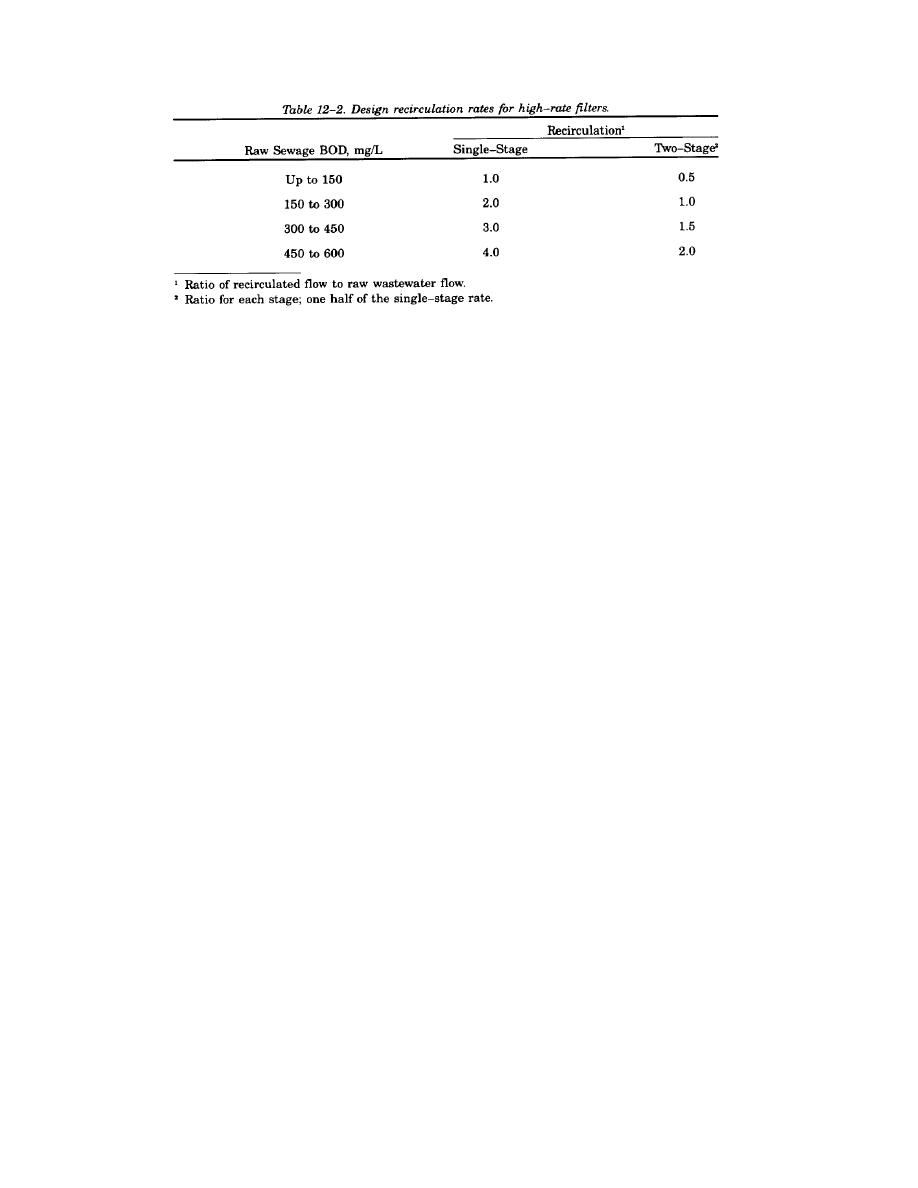
TM 5-814-3/AFM 88-11, Volume III
c. Hydraulic and organic loadings. Loading rate is the key design factor whether the the surface appli-
cation is continuous, intermittent, constant rate, or varying rate. The BOD removal efficiencies obtainable
for specific wastewater organic and hydraulic loading from military trickling filter installations can be
compared when the loadings are within the ranges presented in table 12-1 and the trickling filter performance
formula described in paragraph 12-2 is utilized.
d. Ventilation. Ventilation provides aerobic conditions required for effective treatment. Design for
ventilation will provide the following:
-- Underdrains and collecting channels designed to flow half full at maximum design flow;
-- Ventilating manholes with open grate covers installed at both ends of the central collecting channel;
-- Branch collecting channels with ventilating manholes or vent stacks installed at the filter periphery for
units over 50 feet in diameter;
-- Open area of slots in the top of the underdrain blocks not less than 15 percent of the area of the filter;
-- Peripheral duct (or channel) interconnecting vent stacks and collecting channels;
-- One square foot of gross area of open grating in the ventilating manholes and vent stacks for each 250
square feet of filter surface; and
-- When the trickling filter is constructed with top of media or distributor arms at or near grade, with
under-drain system more than 3 feet below grade or when normal climatic conditions do not include
adequate air movement, ventilation shafts will be provided.
e. Temperature. The performance of trickling filters will be affected by temperature changes in the
wastewater and filter films. Filter efficiency changes attributed to temperature variations are expressed by
equation 12-1.
= E20 x >(T-20)
Et
(eq 12-1)
where:
= BOD removal efficiency at TEC
Et
= BOD removal efficiency at 20EC
E20
>
= Constant equal to 1.035
= Wastewater temperature, EC
T
_________________
Note: For values of (T-20) when > = 1.035, see appendix B.
12-5


 Previous Page
Previous Page
